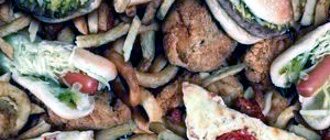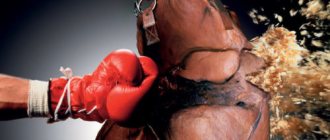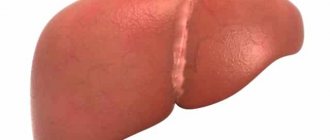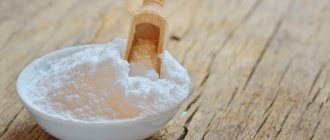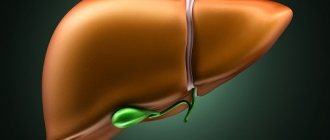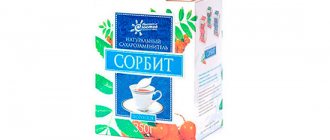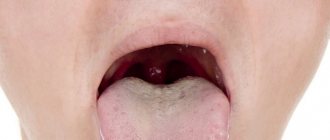Composition of "Allohol", release form
Components of the drug and their role
| Name | Amount, mg | Meaning |
| Dry animal bile | 80 | Improving pancreas function |
| Dried garlic powder | 40 | Antimicrobial effect, prevents the formation of blood clots |
| nettle leaves | 5 | Choleretic properties |
| Activated carbon | 25 | Liver cleansing |
As can be seen from the table, the drug contains 4 active natural ingredients, no additives. The drug is produced in tablet form in quantities of 10, 20 and 50 pieces. The surface is biconvex with a protective coating applied. Color varies from yellow-green to orange. The composition of the drug does not change.
The use of Allochol for the treatment of the gallbladder and recovery after its removal
The leading place among gastrointestinal pathologies is occupied by diseases of the gallbladder and biliary tract, which, if treated incorrectly or untimely, result in cholecystectomy and the need to subsequently take special medications for the complete digestion of food. The choleretic agent Allohol after removal of the gallbladder helps to improve bile circulation, digestion and metabolism.
Allochol is a natural choleretic agent
Inflammation of the gallbladder or cholecystitis, accompanied by stagnation of bile, occurs in acute or chronic form.
Risk factors for its occurrence include:
- bacterial infections;
- improper diet;
- sedentary lifestyle;
- genetic predisposition;
- abuse of alcohol, fatty and unhealthy foods.
Often cholecystitis is combined with inflammation of the pancreas, which is due to the close anatomical and physiological connection of the organs. In this case, the diagnosis is called cholecystopancreatitis.
The main symptom of acute cholecystitis is biliary colic, which manifests itself in the form of sharp, unexpected pain in the right hypochondrium. The pain syndrome is caused by blocking of the cystic duct with a stone.
In chronic cholecystitis, the clinical picture is blurred, and until the onset of exacerbation, the symptoms are unclear: there are dull, aching pains of an intermittent nature in the right side, a bitter taste in the mouth, nausea.
Localization of pain in cholecystitis
Cholecystitis, which is not accompanied by purulent processes and the presence of stones, can be successfully treated with diet, proper nutrition and complex drug therapy. For these purposes, antibiotics, antispasmodics, hepatoprotectors and choleretic drugs are used.
Allohol belongs to the last group. It can be used only if, according to the results of ultrasound, no stones larger than 10 mm in size were detected in the gallbladder.
In the presence of large stones (calculous cholecystitis) exceeding the diameter of the cystic duct, a choleretic agent can aggravate the situation by causing blockage.
Please note: The frequency of diagnosis of cholecystitis in women is 4 times higher than in men, which is explained by the consequences of pregnancy and taking hormonal contraceptives.
Allochol for cholecystitis promotes:
- reducing the severity of inflammation;
- improving liver function;
- diluting and accelerating the outflow of bile;
- normalization of the biliary system;
- prevention and reduction of the formation of cholesterol stones.
Allochol should be taken after meals, swallowing the tablet whole and drinking water.
You should take the drug for chronic cholecystitis as prescribed by a doctor in courses at three-month intervals, as indicated in the instructions. In acute forms of the disease and exacerbation of chronic ones, the medicine is strictly contraindicated. You can start taking it 3 to 5 days after the end of the attack.
Allohol for cholelithiasis
The use of Allochol for cholelithiasis (GSD) is permissible only for small stones. Treatment should be carried out as prescribed and under the strict supervision of a gastroenterologist.
Any deterioration of the condition requires immediate discontinuation of the drug.
The choleretic effect and increased contractile activity of the gallbladder during administration can provoke the movement of stones and their getting stuck in the bile duct, which is fraught with urgent surgical intervention.
The development of cholelithiasis is caused by changes in the composition of bile and disruption of its outflow
The positive effect of Allochol for cholelithiasis is that it accelerates the secretion of bile into the duodenum, prevents its stagnation, the formation of new stones and the growth of existing ones.
It is usually used in conjunction with antispasmodics and drugs that help dissolve gallstones (Ursosan, Ursofalk, Henochol, Henofalk), as well as therapeutic nutrition.
The results of therapy are assessed by ultrasound.
Correction of motor function disorders of the bile ducts and bladder
Impaired motility of the gallbladder, bile ducts and sphincters, leading to problems with the excretion of bile, is called biliary dyskinesia. The disease is not life-threatening and occurs in every third person, but it increases the risk of developing cholestasis and cholelithiasis.
Dyskinesia is of two types:
- Hypotonic type , when the tone and peristalsis of the biliary tract is reduced, manifests itself in the form of dull, prolonged pain, loss of appetite, bitterness in the mouth, and nausea.
- According to the hypertensive type , when the tone and peristalsis of the bile ducts are increased, the pain is paroxysmal in nature and intensifies after active movements, nervous stress, and unbalanced nutrition.
Allochol is available in tablet form, 50 tablets per pack.
To treat this disorder of the biliary system, medications, diet, proper rest, normalization of diet and mental state are prescribed. The drugs used are painkillers, antispasmodics, enzymes, tonics and choleretic agents.
For biliary dyskinesia of the hypotonic type, Allochol is used.
With this pathology, it contributes to:
- increased production and secretion of bile;
- improving motility of the gastrointestinal tract;
- elimination of putrefactive processes developing against the background of difficult digestion;
- prevention of stone formation due to bile stagnation.
Important: Allochol is contraindicated for use in case of allergies to any of the components of the drug, dystrophic changes in the liver, acute pancreatitis and hepatitis, peptic ulcer.
Use for gallbladder deformation
A bend in the gallbladder can be congenital or acquired. Acquired bending often occurs as a complication of biliary dyskinesia and inflammatory processes in the organs of the digestive system (cholecystitis, cholangitis, colitis, pancreatitis).
Associated complications of the pathology are:
- violation of bile circulation;
- deterioration of digestion;
- accumulation of toxic products in the blood;
- painful sensations in the right side;
- bloating, constipation.
In the absence of stones, conservative treatment is prescribed, which consists of following a diet, exercise therapy, and periodically taking choleretic drugs, antispasmodics, and painkillers.
Bend
The use of choleretic drugs is aimed at stimulating the secretion and outflow of bile. Considering that Allochol has both choleretic and cholekinetic effects, it is used for inflection of the gallbladder.
The absorbent properties of the drug help reduce fermentation in the intestines, neutralize and accelerate the elimination of toxins. It should be taken if the condition worsens, a feeling of bitterness in the mouth, nausea, constipation, or discomfort in the right hypochondrium occurs.
The course of treatment lasts from 4 to 8 weeks. It is repeated as necessary.
How does the medication work?
The drug activates the processes of bile formation.
The tablets activate the production of bile. This, in turn, leads to beneficial processes in the body, such as:
- reduction of inflammation and pain;
- improving food absorption;
- increased secretion activity of other organs;
- Precipitation of cholesterol crystals, which reduces the possibility of stone formation.
Directions for use and doses

The period of use by adults for the treatment of chronic diseases is about a month. If the disease worsens, it is recommended to increase the course to 2 months. The daily dosage is 3-4 times a day, 1-2 tablets. This course can be repeated after 3 months. Be sure to take it after meals.
“Allohol” for hepatitis and other liver ailments helps accelerate the production of hydrochloric acid, which damages the mucous membrane of the gastrointestinal tract.
Use for children
| Age, years | Dosage, table. | Reception frequency, r./d. |
| Up to 7 | ½—1 | 2 -3 |
| Over 7 | 1—2 | 3 |
The dosage in a child depends on the age and degree of the disease. The duration of the course in the acute stage is up to 2 months, and for chronic illnesses - about 1 month. The tablets should be taken after meals. You can take an apple or some other fruit and then drink the medicine. In case of pain and in case of exacerbation of the pathology, the course of use is increased. The timing of treatment for repeat therapy does not change.
Can it be used by pregnant women?

Drinking the drug is not dangerous for pregnant women and women during lactation. The fruit is not negatively affected. When using other drugs, such as Allohol, you should pay attention to changes in your well-being. And if unpleasant symptoms occur, stop taking the pills and consult a specialist. The dosage and period of use remain the same.
How to cleanse the liver with Allohol
In alternative medicine, there are several methods used to cleanse the liver with Allochol.
This process takes place in several stages:
- Preparation;
- purification process;
- cleansing the body of toxins and waste.
A positive result can only be achieved if the dosage is followed and the duration of treatment is sufficient. It is, of course, possible to carry out the procedure at home, but the diagnosis must first be made by the attending physician. Otherwise, cleaning will not only not be useful, but also harmful.
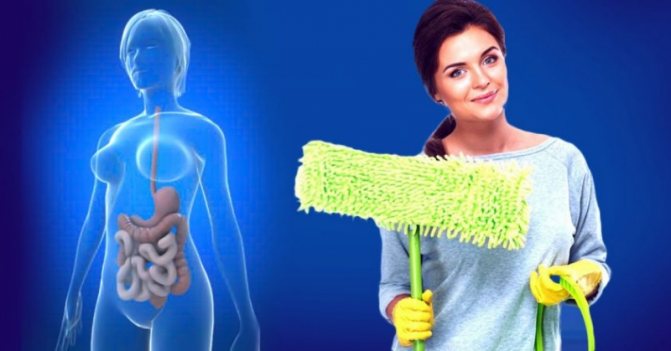
Well, you need to forget about preliminary cleansing of the body
Popular cleanses are presented below:
- traditional scheme;
- cleaning in two weeks;
- cleaning in two days.
Below, each method will be discussed in more detail.
Traditional cleaning
This cleaning is done using the usual method of taking the drug. It is enough to take one or two tablets three times a day. The maximum number of tablets is 8, they are drunk in four doses.
The body must first be prepared. A week before the intended cleansing, you must stop eating fatty and fried foods, sweets, and salty foods.
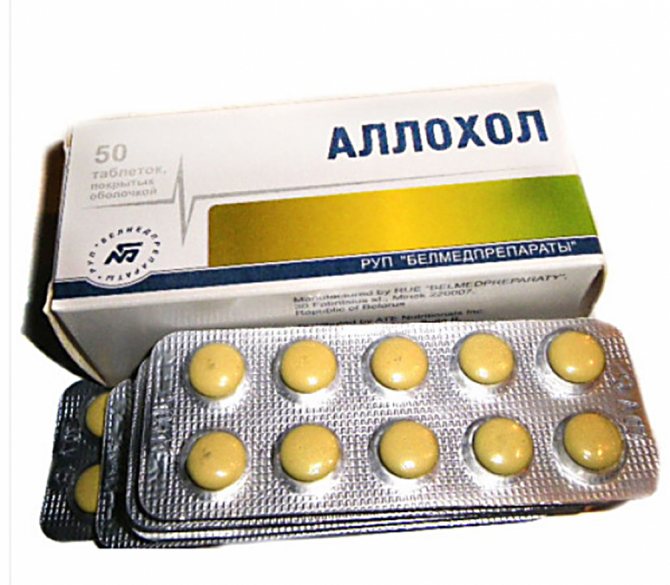
An example of what the drug looks like
The duration of such cleaning is three weeks, but if necessary it can be extended to two months. The number of such procedures can reach up to three per year.
Cleaning in two weeks
The peculiarity of the procedure is a gradual increase in drug intake, and then a decrease.
An example diagram looks like this:
- first day - take one tablet per day;
- second day – two tablets;
- third day - three.
Thus, you need to reach seven days, after which the dosage reduction begins. Cleaning ends when one tablet is drunk again.
Cleaning in two days
When none of the methods listed above help or cannot be used, you can use a two-day cleanse. However, one must take into account the fact that this is a more aggressive effect for the body.
It all starts with preparation. You should drink a laxative and also give an enema. A few hours later, drink a glass of apple juice. Three such glasses should be drunk in three hours.
Two hours before sleep is planned, the next stage begins. You need to take three tablets of the drug. After forty minutes, drink a mixture consisting of 50 grams of olive oil, 30 grams of lemon juice.
A hot heating pad is placed under the right side, and the person himself takes a horizontal position. It is forbidden to get up for the next two hours. You can disturb the peace only if you really want to go to the toilet.

Healthy vegetable diet
Waking up in the morning, you should do an enema again. To complete this, a proper diet consisting only of vegetables begins. The next day you are allowed to eat everything, with the exception of fatty and fried foods.
Despite the effectiveness of such cleaning, it is not recommended to carry it out without consulting a doctor. It is important to obtain information about the state of your health, as well as listen to the opinions of specialists if they are categorically against it.
Compatibility with medications and alcohol

If the tablets are used in conjunction with other medications that increase bile formation, the choleretic effect will be better. Laxatives together with Allohol normalize stools and eliminate constipation. In combination with antiseptics and antibiotics, they have a beneficial effect on inflammatory processes. The instructions say that alcoholics are prohibited from taking it. This is due to the fact that people who drink have altered liver tissue, dystrophy is observed, so there is an additional load that leads to undesirable symptoms, such as nausea, diarrhea, and vomiting. Drinking alcohol in small doses also reduces the therapeutic function of the drug.
Allohol for chronic cholecystitis
Cholecystitis is one of the most common diseases of the digestive system, manifested in the form of inflammation of the gallbladder wall. The cause of this disease is stagnation and infection of bile.
The above reasons are closely interrelated and often reinforce each other. A variety of microbes (Escherichia coli, staphylococci, streptococci and others) are the causative agents of this disease and enter the gallbladder through the bile ducts, as well as with the influx of lymph and blood.
In this article we will figure out which is better - “Allohol” or “Holenzym”.
What medications are used for cholecystitis?
“Cholenzim” and “Allohol” are medicines that enhance bile formation and promote the release of bile into the duodenum, i.e.
have a choleretic effect: they normalize the process of bile formation, make it less thick and prevent stagnation. Normalizing the process of bile formation is very important for biliary dyskinesia (impaired motility of the bile ducts).
These medications prevent the formation of gallstones by preventing bile from stagnating.
But still, each of these drugs does not have the same effect on the human body and has a different range of therapeutic objectives. In order to decide which is better – “Cholenzim” or “Allohol”, you must first understand the peculiarities of the action of these drugs.
What is included in Cholenzym?
“Cholenzim” has a cumulative effect: it normalizes the functioning of the bile ducts and gallbladder, and also improves the activity of the entire human digestive system.
Why does this drug show such varied effectiveness? It's all about the components of its composition. “Cholenzim” is made from animal bile in dry form.
In addition, it contains enzymes produced by the pancreas of cattle and the mucous membranes of the small intestine in dry form.
Many people are interested in “Cholenzim” or “Allohol” - which is better for cholecystitis.
Who needs to drink Cholenzym and when?
For the treatment of what ailments is Cholenzym most often prescribed? Indications for the use of this drug are always associated with diseases and disorders of the functions of the gastrointestinal tract. "Cholenzim" is prescribed for:
- gastritis;
- chronic hepatitis, cholecystitis and pancreatitis;
- increased gas formation;
- colitis;
- diarrhea of unknown origin.
Cholenzym is also allowed to be taken by those who do not suffer from pathologies of the digestive system, but simply abuse junk food, overeat, or often eat irregularly. This medicine is also prescribed to those patients who lead a sedentary lifestyle and are forced to remain in bed for a long time.
The patient himself must decide which is better - Allohol or Cholenzym.
Contraindications to the use of Cholenzyma
It is not recommended to take Cholenzym if you are hypersensitive to the components included in the drug, in the treatment of acute or chronic pancreatitis, as well as with subhepatic jaundice.
The only serious problem that may occur when taking Cholenzyme is allergic reactions.
“Cholenzim” or “Allohol” - which is better? It is better to ask your doctor this question.
Additional information about Holenzyme
Let's consider other equally important aspects of taking this medicine: instructions for use, reviews, price and analogues. Treatment with Cholenzym is quite simple: it should be taken orally immediately after meals, i.e. swallowed. As a rule, 1 tablet is prescribed 1-3 times a day.
On the medical drug market, the drug has a modest price: a pack of 50 tablets costs approximately 98-117 rubles.
Analogues of this drug are “Allohol”, “Holosas”, “Artihol”, “Hofitol” and “Holiver”.
“Cholenzim” or “Allohol” - which is better in composition?
What is included in Allohol and for what diseases is it taken?
"Allohol" has a natural composition.
To obtain this medicine, various plant components (extracts of nettle and garlic), animal bile and the most effective adsorbent - activated carbon are used.
These components increase the performance of the liver, improve intestinal motility, prevent the formation of stones in the gall bladder and support the secretion of all organs that are involved in the digestion of food.
“Cholenzim” or “Allohol” - which is better according to reviews? More on this below.
Indications for use of "Allochol"
For what ailments is Allohol prescribed? The indications for use of this drug are slightly different from the scope of activity of Cholenzyma. With its help, disorders in the biliary tract and liver are treated:
- cholecystitis;
- hepatitis;
- bile duct dysfunction;
- cholangitis;
- constipation;
- formation of stones in the vein bladder;
The drug is used at the initial stage of liver cirrhosis and after surgery on the biliary tract and resection of the gallbladder.
Distinctive features of the Allohol method
Before taking this medicine, you need to eat (not necessarily a lot, a slice of buttered bread or fruit will be enough). Adults whose illness has become chronic are recommended to take Allohol daily, 1-2 tablets 3-4 times a day for a month.
What to use – “Cholenzim” or “Allohol” for cholecystitis? Or maybe it’s worth choosing another remedy?
Side effects when taking Allochol
While taking this medication, unpleasant reactions of the digestive (belching, diarrhea, heartburn, flatulence) and defense systems of the body (allergic reactions) are possible. There are also some contraindications:
- individual intolerance to the components of Allochol;
- pancreatitis, enterocolitis or acute hepatitis;
- jaundice, which is caused when a stone enters the bile ducts;
- gallstones (more than 1 cm);
- calculous cholecystitis;
- stomach or duodenal ulcer;
- liver dystrophy.
The main differences between the two drugs
“Cholenzim” and “Allohol” differ in the following parameters:
- Firstly, they have different compositions. "Cholenzim" is a medicine of animal origin, and "Allohol" is an exclusively herbal preparation.
- Secondly, they have different effects. Due to the content of pancreatic enzymes, Cholenzym improves the functioning of the digestive system. "Allohol", unfortunately, does not have such an effect, but it has a good effect on the pancreas and liver.
- Thirdly, they have different indications for use.
- If it is necessary to normalize the process of bile formation or get rid of constipation, then Allohol exhibits its effect much faster.
- Allohol has significantly more contraindications.
Both drugs can be used by pregnant women. But this must take place under the strict supervision of a doctor.
"Cholenzim" or "Allohol" for cholecystitis - reviews
Consumers claim that Cholenzym is an “inexpensive and fairly good medicine.” People consider it quite safe because it has a natural composition. But some mention cases of an allergic reaction. Cholenzym sometimes helps reduce pain in the right side, although it does not have an analgesic effect.
“Allohol” received no less positive reviews. It can relieve heaviness in the side, relieve bitterness in the mouth, and help in the fight against bloating and constipation. People are very attracted by the price of this drug - 31-40 rubles per package of 25 tablets.
Conclusion
So what will you ultimately choose: “Cholenzim” or “Allohol”? It all depends on your problem. If you have problems with the gallbladder, liver, or bile outflow, then it is better to use Allohol for treatment.
If you need to normalize the functioning of the stomach or intestines, then it is better to use Cholenzym.
Both medications are good, and which one is better to choose depends solely on what diagnosis you have been given.
We looked at what is better - “Allohol” or “Holenzym”.
Source: https://gepasoft.ru/allohol-pri-holecistite-hronicheskom/
